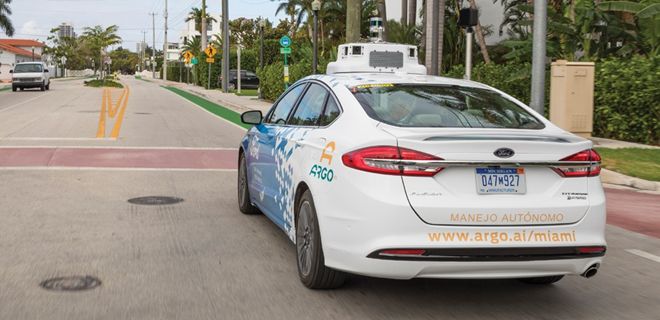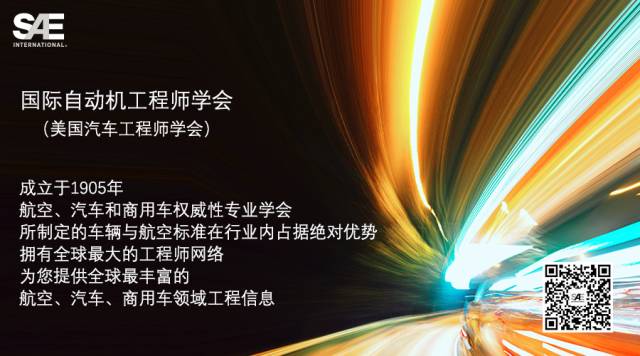 QNX与福特和其他OEM的合作正在帮助加速向”脱手”驾驶过渡。
QNX与福特和其他OEM的合作正在帮助加速向”脱手”驾驶过渡。
黑莓 QNX 公司汽车业务主管John Wall 解释道:“随着车辆开始通过软件实现越来越多的功能,汽车行业的收益流和商业模型都在发生变化。”
如今,汽车行业的产品差异化开始逐步向服务和软件方面靠拢。随着网联车开始增加,越来越多的网络安全功能,汽车领域的各个领域都发生了重大变革,比如出现了一些新的商业关系结构。
软件系统现已成为车辆推进控制、信息娱乐、安全和自主功能的基础,也得到了OEM的拥护。对于黑莓 QNX 公司总经理兼汽车技术业务主管John Wall 来说,如今的情况已经与 10 多年前哈曼(Harman)收购 QNX 时发生了天翻地覆的变化。
那时,一些汽车行业的高管并不完全理解 QNX 实时操作系统到底有何作用。
Wall 表示,“当时,哈曼的那些经理曾经开玩笑说,底盘和动力系统的工程师才是最厉害的,我们只是‘退而次之’!”Wall 毕业于卡尔顿大学工程专业,在 1993 年加入QNX 公司,而后晋升至副总裁,目前担任总经理职务。
如今,全球超过 6000 万辆汽车都搭载了QNX 操作系统。公司有很多“大牌”客户,最近福特和捷豹路虎都与 QNX 签署了软件使用许可协议。福特甚至在自己的研发团队中增加了 450 名黑莓研发工程师及相关岗位,这样的变化均凸显了汽车行业的商业战略正在发生重大转变。
“十年前,大家都明确地‘各司其职’,QNX 服务于一级供应商,然后一级供应商服务于OEM。如果我们想直接联系一家OEM?那肯定只能得到否定答复。”Wall 回忆说,“现在,大家开始建立更多合作伙伴关系。如今的世界越来越复杂,特别是在自动驾驶出现之后,很多原厂和一级供应商开始意识到,很多工作他们根本无法凭一己之力独自完成。”
网联功能与软件战略
Well 先生表示,曾经的“供应商-客户”双边模式已经变得更像是一种三边模式。现在,一级供应商、OEM和二级供应商同时出现在同一场会议中的情况非常常见。这种变革的动力很大程度上来自谷歌/Waymo和苹果等传统汽车行业之外的玩家。Wall观察到,“这些新晋参与者的自动驾驶项目,正在迫使传统汽车厂商加足马力参与竞争。如果汽车制造商无法自己完成软件研发,那么一定有人插手这项生意。”
在科技行业的“穷追猛打”之下,传统汽车厂商开始不得不跟上这些高科技公司的运营和创新模式,其中一个重要体现就是“速度快”。然而,对于传统汽车行业而言,一味追逐科技行业的产品研发速度,后果可能是致命的,尤其是在即将到来的自动驾驶时代中,因为我们需要依赖这些汽车产品在驾驶途中为我们做出“生死抉择”。
坏消息是,无论是在单纯的公共道路汽车测试中,还是在客户的实际使用中,车辆系统造成的死亡事故往往要比纯人为失误造成的死亡事故受到远远更多的关注,任何细枝末节都将完全暴露在公众关注的聚光灯之下。如果无人驾驶汽车开发商粗心大意,可能招致政府监管机构的介入,这也是业内人士所担心的地方之一。
“在自动驾驶汽车的推广中,汽车制造商肯定会采用循序渐进的做法,这个过程将非常缓慢”。Wall猜测,“政府一旦认定汽车公司的行为是不负责任的,就可能会介入。我认为,行业需要担心的并不是传统汽车公司,勤奋和谨慎是这些老牌制造商的一贯作风。真正需要担心的是优步(Uber)这样的非传统汽车公司。”
在自动驾驶汽车真正上路之前,各种互联功能将成为各类短期汽车软件战略中的基本要素。网络费用、人机接口(HMI)及安全性,将成为互联功能研发中最需要考虑的设计挑战和成本因素。战略规划者需要思考如何才能利用汽车中产生的各种信息实现创收。
Wall 指出,“来自汽车传感器中的大量数据可能非常有价值。对于OEM来说,如何利用这些数据创收非常重要,这将成为他们未来的工作重点之一。”
操作系统的未来角色
未来,下一代汽车的许多特性和功能都可能以“附加服务”的形式存在。大大小小的公司都在试图理清如何推出可以让车主愿意付钱购买的应用程序和服务。有观点认为,手机行业可能将推出一种适合汽车行业的模式。
未来,各类厂商可能都将选择从操作系统入手,开拓新的市场。
“如今,汽车正在被拆分为一系列高级服务,这与手机行业的历史发展趋势很相似。”Wall 先生表示,“随着汽车的联网功能越来越多,OEM开始迫切希望能将这些服务货币化。各家公司将不得不开始开发汽车专用应用程序。此时,对标准化操作系统的需求也应运而生,如同手机中的iOS 和安卓平台一样。事实上,自动驾驶也将是这些应用之一。”
然而,这种以应用程序的形式为车辆提供服务和功能的情况,可能不会很快出现,这是因为汽车行业对可靠性有非常高的要求,而软件故障可能会造成非常严重的后果。因此,车辆应用程序的开发也将与车辆自身相对更长的研发周期同步,这有助于提高安全性,确保哪怕有故障发生,任何与安全有关的关键车辆功能也不会受到影响。从另一方面,操作系统的出现,则有助于将信息娱乐系统等应用程序与真正关乎车辆安全的关键软件隔离开来。
在此背景下,黑莓 QNX 公司则推出了一款可以支持多种客户操作系统的Hypervisor 虚拟机管理程序,帮助客户将信息娱乐系统等应用程序隔离在“沙箱”中。Wall 先生表示,目前,QNX 正在与几家通过虚拟机管理程序来运行安卓和Linux 操作系统的汽车制造商合作。
在强大多核处理器的支持下,硬件整合的大趋势也促进了虚拟机管理程序的应用。在许多车辆中,数字仪表盘和信息娱乐系统正在逐步实现集成,而不再分别采用专用的独立处理器。
“仪表盘和信息娱乐系统将运行在同一个计算机平台上,但我们的虚拟机管理程序可以将这两类应用程序运行的环境隔离开来。QNX 用于仪表盘,Linux 和安卓则用于信息娱乐系统。”Wall 先生解释道,“还有一些公司为车辆安装了亚马逊的 FireOS 操作系统。我们可以将这些安全级别较低的系统隔离起来,确保关键的仪表盘软件免受任何问题的影响。”
深层网络防御
毫无疑问,安全肯定是这些安全相关设计项目的基础,其中网络安全的重要性尤为凸显。鉴于事故可能造成严重后果,如何阻止黑客攻击也是另一个令人担忧的问题。
Wall 希望帮助汽车行业应对此类问题。黑莓公司从一开始就非常注重安全性,QNX 工程师在这方面有非常丰富的经验,曾经与多家油气行业客户密切合作,为电网等大型基础设施系统提供网络安全保障。
Wall 表示,“安全功能不能以附加功能的形式存在,你真正需要的是纵深防御。比如,芯片可以通过一系列认证,因此当你看到一颗经过认证的芯片时,你就知道这颗芯片可以信任。当然了,即使是最好的安全系统也有可能遭到破坏,因此更重要的问题是如何及时发现并识别这些问题。”
Revenue streams and business models are changing as more vehicle functions move to software. Blackberry QNX’s John Wall explains.
The auto industry’s evolution to a product differentiation based on services and software is prompting a transformation in areas as diverse as the structure of business relationships through cybersecurity for connected vehicles.
OEMs are embracing software, which now forms the basis for propulsion-system control, infotainment, safety and autonomy. For John Wall, the General Manager of Blackberry QNX and leader of the company’s automotive technology business, that’s a marked change from a little over a decade ago when Harman acquired QNX.
At that time, some automotive executives were unsure exactly what the QNX real-time operating system did.
“Harman managers joked that we were secondary to the golden engineers in chassis and powertrain!” noted Wall, who joined QNX in 1993 as a Carleton University engineering grad. He rose through the ranks to become VP Engineering before taking his current role.
Now, QNX software serves as the operating system (OS) on more than 60 million vehicles. Ford and Jaguar Land Rover both recently signed licensing agreements. Ford brought 450 Blackberry engineers and other staff into its development team. Changes like these highlight a major shift in business strategies.
“Ten years ago, there were clear lines—QNX supplied Tier 1s, Tier 1s supplied OEMs. If I spoke to an OEM, that was a no-no,” Wall recalled. “Now there’s a lot more talk of partnerships. As the world becomes more complex, for example with autonomous driving, there’s a realization by OEMs and Tier 1s that they can’t do this alone.”
Connectivity and software strategies
He said the old supplier-customer model has become more of a triangle. Now it’s common to have Tier 1s, OEMs and Tier 2s all in one meeting. Much of this impetus for change came from outsiders like Google/ Waymo and Apple. Hype around their autonomous-driving programs “pushed the traditional OEMs into high gear,” Wall observed. “If carmakers don’t do their own software, other people will step in and do it for them.”
The tech industry’s impetus is driving OEMs to operate and innovate more like high-tech companies. But the speed that comes in industries that have fleeting product life cycles can be perilous, especially in the coming era when cars make life and death decisions on the roadways.
Unfortunately, fatalities caused by vehicle systems, both while testing on public roads and in customer use, have received far more attention than those caused by purely human operator error, putting them in the public spotlight. There’s some concern that government regulators may step in if autonomous-vehicle developers seem to be careless.
“Automakers will be very slow and incremental in their autonomous-driving rollouts,” Wall surmises “Governments may step in if they see car companies being irresponsible. What I think the industry has to worry about is not the traditional car companies, who are used to being diligent and focusing on safety. We have to worry about non-traditional companies like Uber,” he said.
Before autonomy hits the roads, connectivity will be an essential element in near-term software strategies. Cellular fees, human-machine interfaces (HMI), safety and security are among the design challenges and cost factors associated with connectivity. Strategic planners need to figure out to use all the information created in cars to bring in revenue.
“Tons of data from all the sensors on a car can be very valuable. It will be a huge play for OEMs to monetize the data that’s on cars,” Wall noted.
Future role of the OS
Many of the features and functions on next-generation vehicles may be provided by add-on services. Companies large and small are trying to figure out how they can create apps and services that vehicle owners will pay for. Many believe that the cellphone industry may provide a model that can be adapted for autos.
Operating systems may become the lingua franca for vendors attempting to carve out a new market.
“The car is being extracted out to a number of high-level services, similar to how the cellphone industry emerged,” Wall said. “As cars become connected, OEMs want to monetize services. People will have to write apps for cars, so they’ll need a few OSes to standardize on, similar to what happened with iOS and Android in cell phones. Autonomous driving will be one of those apps.”
The push to add services and functions via apps will happen slowly because of the high reliability needed for autos, where software glitches can have severe consequences. Apps will follow the lead of vehicles themselves, with longer engineering cycles that help ensure that if failures occur, they won’t impact any safety-critical vehicle functions. The OS can help isolate infotainment apps from safety-critical software.
Blackberry QNX’s product plan includes Hypervisor, which supports guest operating systems, isolating them in a sandbox. The company is working with several automakers that run Android and Linux on top of Hypervisor, Wall said.
The consolidation of hardware, enabled by the emergence of powerful multicore processors, is also spurring the use of Hypervisor. In many vehicles, digital instrument clusters and infotainment systems are moving to a single computing platform instead of dedicated, discrete processors in today’s production vehicles.
“Clusters and infotainment systems are running on the same computer platform, using our Hypervisor to separate the environments. QNX is used for the cluster, Linux and Android are used for infotainment,” he explained. “Some companies are bringing Amazon’s Fire OS into the car for services. Those non-safety systems can be isolated so critical cluster software won’t be impacted by any issues.”
Deep-cyber defenses
Security is an underlying aspect of these safety-related design programs. Cybersecurity is of equal or greater importance. Keeping hackers at bay is another concern given the potential for serious repercussions from incidents.
Wall hopes to help the industry avoid problems. Blackberry focused on security from its inception, and QNX engineers worked closely with oil and gas customers experienced in dealing with threats to large infrastructure systems like the power grid.
“Security is not a bolt-on piece, you need defense in depth, like knowing that chips are authenticated so you can establish a root of trust. Even the best security can be breached, how will breaches be identified when they’re discovered,” Wall said.
Author: Terry Costlow
Source: SAE Automotive Vehicle Engineering Magazine
等级
打分
- 2分
- 4分
- 6分
- 8分
- 10分
平均分
